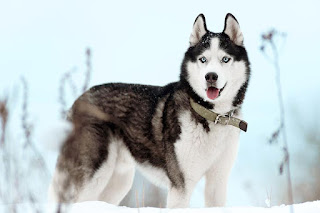The sugar glider (Petaurus breviceps) is a small, omnivorous, arboreal, and nocturnal gliding possum belonging to the marsupial infraclass. The common name refers to its predilection for sugary foods such as sap and nectar and its ability to glide through the air, much like a flying squirrel. They have very similar habits and appearance to the flying squirrel, despite not being closely related—an example of convergent evolution. The scientific name, Petaurus breviceps, translates from Latin as "short-headed rope-dancer", a reference to their canopy acrobatics.
The sugar glider is characterised by its pair of gliding membranes, known as patagia, which extend from its forelegs to its hindlegs. Gliding serves as an efficient means of reaching food and evading predators. The animal is covered in soft, pale grey to light brown fur which is countershaded, being lighter in colour on its underside.
The sugar glider is native to a small portion of southeastern Australia, in the regions of southern Queensland and most of New South Wales east of the Great Dividing Range. Members of Petaurus are popular exotic pets and are frequently also referred to as "sugar gliders", but these are now thought to likely represent another species from West Papua, tentatively classified in Krefft's glider (P. notatus).
The sugar glider has a squirrel-like body with a long, partially (weakly) prehensile tail. The length from the nose to the tip of the tail is about 24–30 cm (9–12 in), and males and females weigh 140 and 115 grams (5 and 4 oz) respectively. Heart rate range is 200–300 beats per minute, and respiratory rate is 16–40 breaths per minute. The sugar glider is a sexually dimorphic species, with males typically larger than females. Sexual dimorphism has likely evolved due to increased mate competition arising through social group structure; and is more pronounced in regions of higher latitude, where mate competition is greater due to increased food availability.
The fur coat on the sugar glider is thick, soft, and is usually blue-grey; although some have been known to be yellow, tan or (rarely) albino.[a] A black stripe is seen from its nose to midway on its back. Its belly, throat, and chest are cream in colour. Males have four scent glands, located on the forehead, chest, and two paracloacal (associated with, but not part of the cloaca, which is the common opening for the intestinal, urinal and genital tracts) that are used for marking of group members and territory. Scent glands on the head and chest of males appear as bald spots. Females also have a paracloacal scent gland and a scent gland in the pouch, but do not have scent glands on the chest or forehead.







Follow Us
Were this world an endless plain, and by sailing eastward we could for ever reach new distances